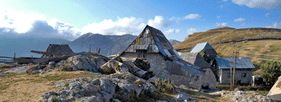Baklava: the queen of traditional cakes
Baklava (/ˈbɑːkləvɑː/, /bɑːkləˈvɑː/,[1] or /bəˈklɑːvə/; Ottoman Turkish: باقلوا[bɑːklɑvɑː]) is a special kind of cake that is preparing for Eid and other special occasions. It is a rich, sweet pastry made of layers of filo filled with chopped nuts and sweetened and held together with syrup or honey. It is characteristic of the cuisines of the former Ottoman Empire, and is also found in Central and West Asia. The word baklava is first attested in English in 1650, a borrowing from Ottoman Turkish. The name baklava is used in many languages with minor phonetic and spelling variations.
Baklava is normally prepared in large pans. Many layers of phyllo dough, separated with melted butter and vegetable oil, are laid in the pan. A layer of chopped nuts—typically walnuts or pistachios, but hazelnuts are also sometimes used—is placed on top, then more layers of phyllo. Most recipes have multiple layers of phyllo and nuts, though some have only top and bottom pastry. Before baking, the dough is cut into regular pieces, often parallelograms (lozenge-shaped), triangles, diamonds or rectangles. After baking, a syrup, which may include honey, rosewater, or orange flower water is poured over the cooked baklava and allowed to soak in. Baklava is usually served at room temperature, often garnished with ground nuts.
Baklava is a traditional dish of the Balkans and the Orient. In Bosnia and Herzegovina, baklava traditionally considered special cake for the holidays, and the Bosniaks are preparing it for Eid, while the Croats, in parts of central Bosnia, Posavina and Slavonia, preparing baklava for Christmas.




















